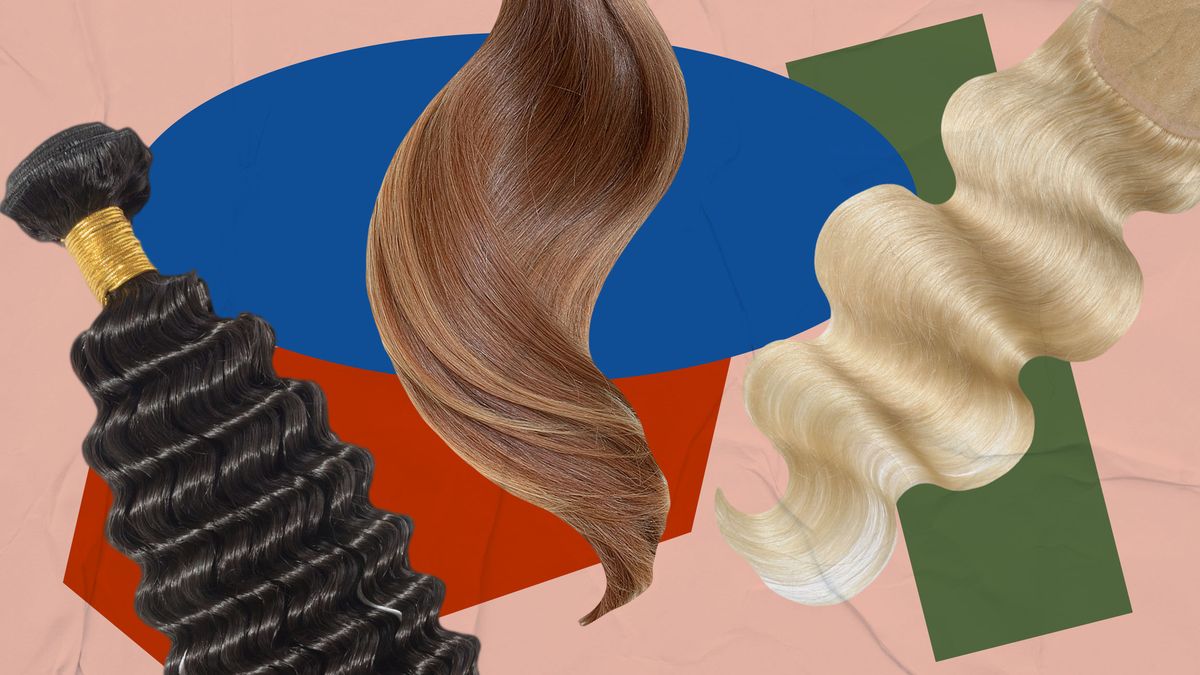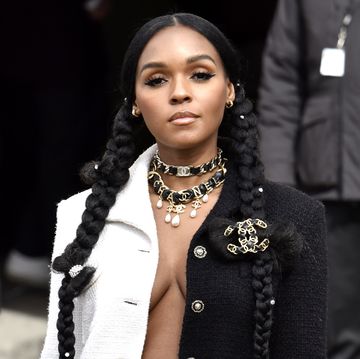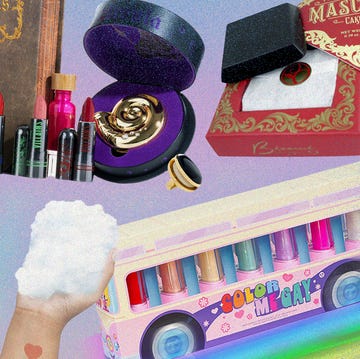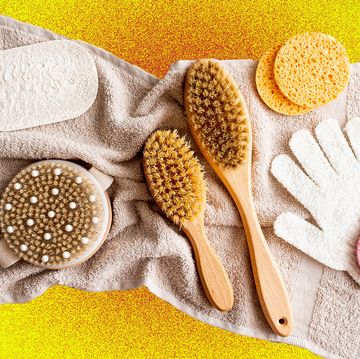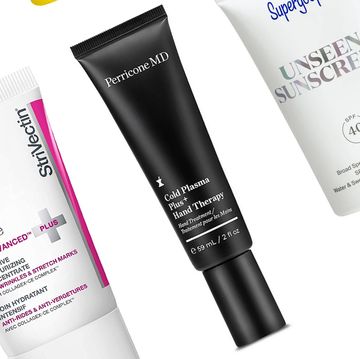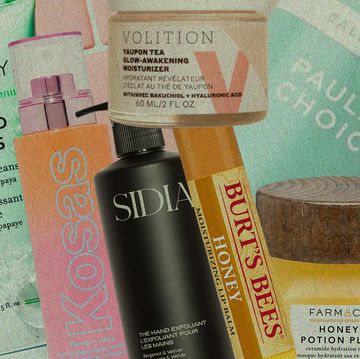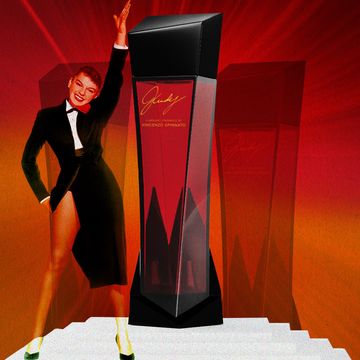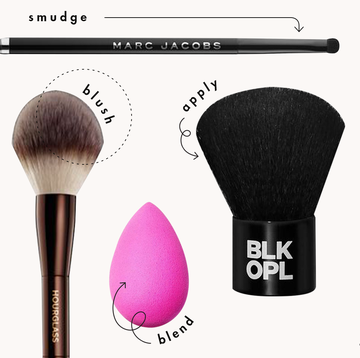Between DIY rice treatments and satin pillowcases, we’re savvier about hair care than ever before. While a night on the town used to mean flat-ironing or creasing our locks into submission, now we know that we don’t have to apply heat to our hair for hours on end to achieve a red carpet-ready do — now we can pop on a perfectly styled pony. We no longer have to wait for years to achieve a desired length, when we can play “dress up” with longer locks at our will.
So, why do extensions still scare so many?
One would assume it’s the concept of detached human hair lying around your apartment, but more likely we’ve been scarred by so many hairpiece horror stories. There’s the traction alopecia associated with too-tight weaves, and the visible clip-ins when your hair shifts even slightly. Most likely, it’s the perpetual concern that the color won’t match, the texture will be off, and the hair will just look, well, fake. But not only are extensions a great protective styling option, they’ve evolved to be almost impossible to distinguish from your own hair — if you do them right.
Celebrity stylist Paul Labrecque prefers to work with tapes and extra mini nano beads as opposed to sew-in extensions, and selects extensions based on texture match rather than homing in on color or a specific brand. He never recommends extensions for someone whose hair is thinning or falling out, and always requires a thorough consultation ahead of application.
“It is important to have stable, well-rooted, and healthy hair to establish the perfect hold onto an extension,” he explains. “If someone has thin hair, I’ll do a broken chain — allowing the actual hair to be left untouched. This is a blending technique where I’ll use nano beads, as they don’t have damaging effects. With thick hair, I would do a heavy bottom with light placement as we work up to the scalp.”
While the result of high-quality, salon-installed extensions applied by a great stylist can make for a truly majestic mane, the process requires time, patience, and a pretty robust bank balance. Lulu Pierre would spend 10 hours in the stylist’s chair to touch up her locs — a commitment that quickly became unsustainable. Pivoting to self-application, she struggled to find premade faux locs that remotely resembled their authentic counterpart. So, she made them — enter: Boho Locs.
“I used my experience as a former hairstylist to start creating my own faux locs that I could install via the crochet method,” she explains, adding that growing demand required she find a manufacturer. “Each loc is made by first braiding the hair and wrapping it, then we distress to make it look authentic. Finally, the loc is sealed with heat, by dipping it into hot water or using a hot oven — no two locs will look the same at the end of it all.”
Every facet of Boho Locs’ styles — from the length to the hue and beyond — is a result of customer feedback. As a consumer herself, Pierre knows the concerns that dissuade women from extension experimentation.
“I think a lot of people shy away from extensions because they seem uncomfortable to wear, but we make our locs lightweight and easy to install. … You can’t feel like your best self if you are constantly worried about your extensions falling out or looking fake. Good extensions should make you feel beautiful, sexy, and confident.”
When it comes to seamless extensions, stylist-to-the-stars César Ramirez claims, “You get what you pay for.” He advises matching your extension type to your lifestyles — clip-ins for daily use and temporary transformation, tapes for longer wear (six to eight weeks), and individual bonds for “truly amazing transformation” — and, for longer extension wear, having your stylist trim or thin your hair for optimum blending. Like Labrecque, he recommends always matching the hair’s natural texture to the texture of the extensions. The hair maestro counts the likes of Ciara and Kim Kardashian as clients and references his work with the latter when it comes to adding inches.
“I loved adding 36-inch long extensions to Kim Kardashian’s hair to give her the 'Cher' look, but it looked great because I cut her hair to blend into the extensions. Adding extensions to short blunt cuts is really difficult to blend and usually ends up looking like choppy extensions — the best way to blend in extensions is to razor and/or thin out ends.”
While Ramirez, like many other stylists, works exclusively with human-hair extensions, Insert Name Here cofounder Jordynn Wynn explains there’s a true case to be made for synthetic clip-ins. Modern innovations, she explains, mean high-quality synthetic pieces not only look and feel like natural hair, but can be washed, heat-styled, and maintained the same way as human-hair extensions. Of course, synthetic hair cannot be dyed the same way human hair can, so you need to be certain of your shade prior to purchasing (or be prepared to give it a little spritz with a temporary spray color). Still, Insert Name Here offers 27 natural shades to choose from.
The hair wig and extension industry is on track to hit $10 billion dollars by 2023. Extensions are often viewed as special occasion-only accessories, unnatural, too expensive, or too complicated for self-application. Luxy Hair hoped to shift the narrative and has since become the foremost clip-in extensions company in the world. Much like Boho Locs, its success is contingent on customer feedback.
“Our extensions are made with a multi-tonal adapted coloring system, which means that there are subtle highlights and lowlights, lighter strands, and darker strands throughout each set,” explains marketing director Sari Friedman. “It also ensures that the extensions blend with your natural hair even if your hair color is a few shades off.”
Luxy Hair meticulously sorts each strand in every bundle. Not only must they be of appropriate length and aligned unidirectionally, but the hair must have its cuticles intact to ensure shinier, tangle-free tresses. Insert Name Here tests to ensure its hair is 100-percent human and unprocessed, while also ensuring that all raw materials are traceable and sourced ethically.
“Many factors go into selecting good extensions,” explains Wynn. “Human hair is very expensive, and many brands who claim to have Remy human-hair options are actually using ‘bucket hair’ (hair taken from salons or brushes, etc.), animal hair (seriously, this happens), or mix with synthetic hair to lower the cost.”
In a recent poll, extension brand Insert Name Here found that 75 percent of its clientele had never before purchased hairpieces. This, Wynn maintains, is INH’s purpose come to fruition: expanding the market for high-quality, accessible extensions for those who might not have the desire or resources to see a stylist. When the pandemic left many salon regulars high and dry, they turned to Insert Name Here. “We recognized a white space,” says Wynn. “Many have emailed saying they will never go back to their very expensive human-hair items.”
Ultimately, hairpieces’ ever-updating technology (as well as ongoing celebrity endorsements via the likes of Ariana Grande and the Kar-Jenners) has destigmatized their use. Now, the willingness to experiment has left au naturel kind of overrated. For Pierre, worthy extensions adhere to three key values: “They have to be the best quality available; they have to let our own hair breathe; they have to make heads turn.”
With these boxes ticked, prepare for a longtime love affair with “tressing” up.
Beatrice Hazlehurst is a New Zealand–born writer covering culture, entertainment, and lifestyle for multiple outlets. She nomadically traverses both coasts, but currently you can find her by the beach in Southern California.
Get Shondaland directly in your inbox: SUBSCRIBE TODAY
